Nanjing Confucius Temple (Fuzimiao)- Ticket, Opening Hours, Location, and Highlights
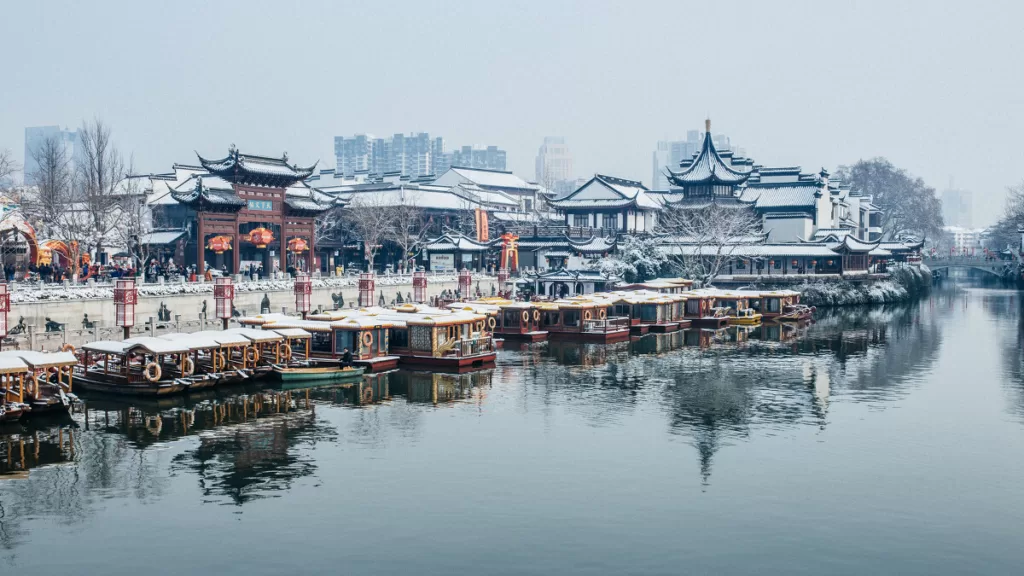
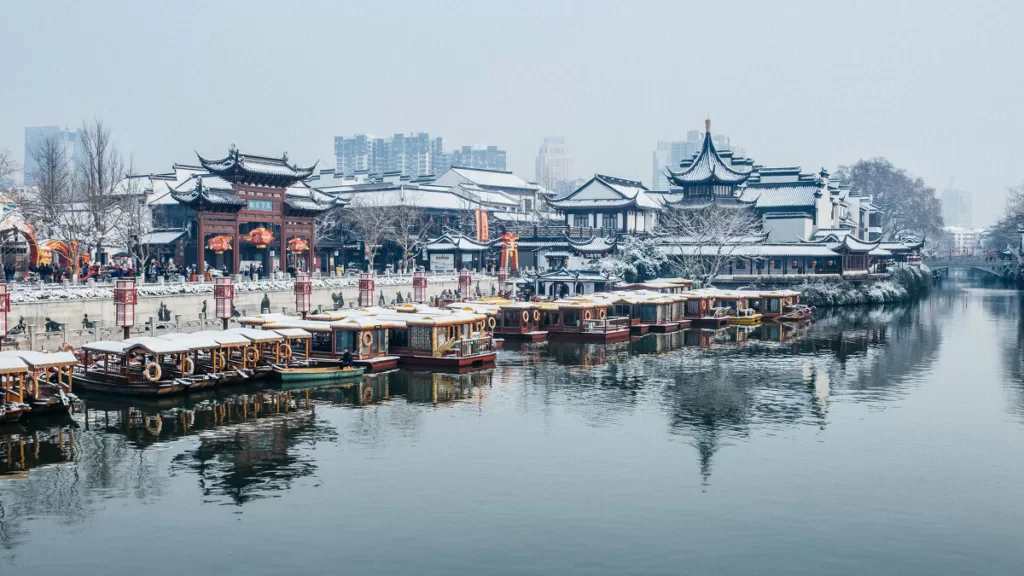
Nanjing Confucius Temple (南京夫子庙, Fuzimiao), established in 1034 AD and expanded from the Eastern Jin Dynasty’s academic palace, stands as a venerable site dedicated to the worship of Confucius. It holds the distinction of being China’s premier national institution, evolving into the foremost seat of learning. Alongside Beijing Confucius Temple, Qufu Confucius Temple, and Jilin Confucius Temple, it ranks among the four great Confucian temples in China, symbolizing a rich cultural heritage on the banks of the Qinhuai River.
This grand complex comprises the Confucius Temple, Academic Palace, and Gongyuan (Imperial Exmination Hall), sprawling across a vast expanse. The stone railings in front of the temple, erected during the Ming Dynasty, showcase the best-preserved ancient architecture within the Confucius Temple complex. Notably, the monumental Zhao Bi (Great Screen) spans 110 meters, standing as the nation’s longest.
Surrounding the Confucius Temple is one of the largest traditional market street in China, creating a bustling atmosphere reminiscent of China’s four major lively markets – Shanghai City God Temple, Suzhou Xuanmiao Taoist Temple, and Beijing Tianqiao. Nanjing Confucius Temple stands as a testament to China’s profound cultural legacy and is a captivating destination for those seeking a glimpse into the nation’s rich history and traditions.
Table of Contents
- Basic Information
- Location and Transportation
- Highlights of Nanjing Confucius Temple
- Vlog about Nanjing Confucius TEmple
- Recommended One-day Itinearary
- Useful Tips Summarized from Reviews
- Attractions Near Nanjing Confucius Temple
Basic Information
| Estimated Length of Tour | 2 hours |
| Ticket Price | Free |
| Opening Hours | 9.00 – 22.00 |
| Telephone Number | 0086-025-52209788 0086-025-52855667 |
Location and Transportation
Nanjing Confucius Temple is situated on Gongyuan Street, on the northern bank of the Qinhuai River in the Qinhuai District of Nanjing City, Jiangsu Province. This prime location places the temple at the heart of the Qinhuai Scenic Belt, contributing to the cultural and historical significance of the site. To get there, you can choose one of the following ways:
Bus: Take bus 2, 26, 44, 46, or 202, get off at Zhonghua Road Zhanyuan Road Stop, and wlak about 500 meters to the east to reach the temple.
Metro: The closest metro station to Nanjing Confucius Temple is Fuzimiao on line 3. After getting out of the station from Exit 2, walk about 300 meters to the southwest to reach the temple.
Highlights of Nanjing Confucius Temple
Dacheng Hall

The focal point of Nanjing Confucius Temple, the Dacheng Hall, stands majestically at 16.22 meters in height, 28.1 meters in width, and 21.7 meters in depth. Within its confines, a monumental portrait of Confucius, measuring 6.50 meters in height and 3.15 meters in width, hangs prominently. The hall is adorned with reproductions of ancient instruments, including bells and chimes from 2500 years ago, offering a captivating auditory experience during periodic performances of ancient melodies and classical music. These spectacles transport the audience to the musical ambiance of the Spring and Autumn periods, showcasing the musicality of that bygone era. Surrounding the Great Hall are intricately painted murals depicting the life and achievements of Confucius, providing a visual feast for visitors. The temple complex is enclosed by twin corridors adorned with thirty calligraphy masterpieces by renowned calligraphers like Zhao Puchu, Lin Sanzhi, Shen Peng, and Wu Zhongqi.
Central Courtyard

The heart of the temple complex, the central courtyard, boasts eight majestic ginkgo trees and symmetrically placed ancient lamps. A straight stone-paved path leads to the platform in front of the Dacheng Hall, where traditional music and dance ceremonies honoring Confucius take place. At the center of this platform stands the largest bronze statue of Confucius in China, measuring 4.18 meters in height and weighing 2500 kilograms. Flanking the stone steps are twelve Hanbaiyu (white marble) statues of Confucius’ disciples, including Yan Hui and Zilu, each standing at 1.80 meters in height.
Culinary Delights
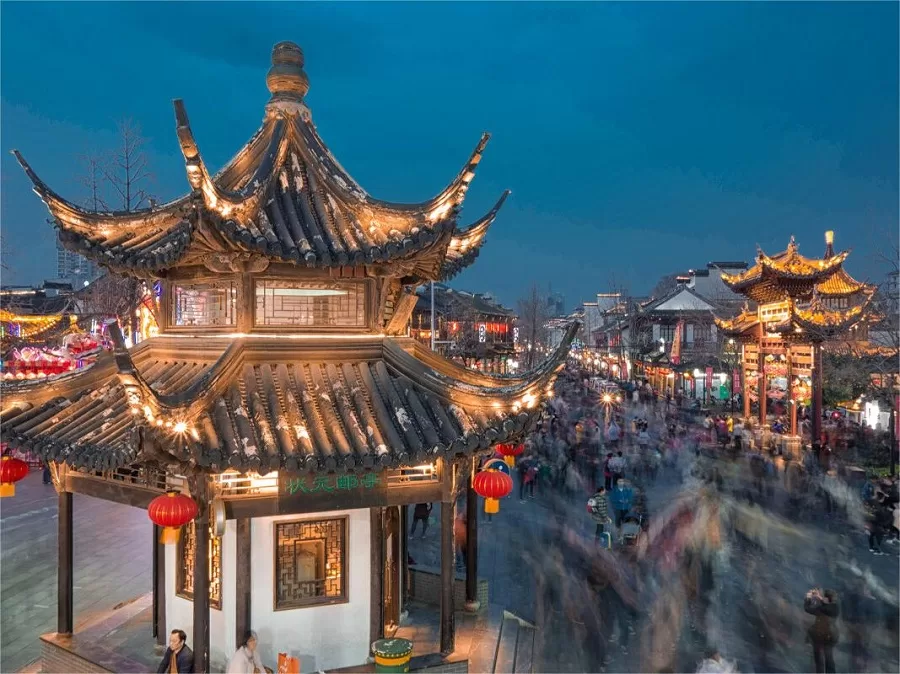
Nanjing Confucius Temple not only serves as a cultural haven but also tantalizes the taste buds with a diverse array of over 200 traditional dishes and flavorful snacks. From the renowned Crab Shell Yellow Roast Cake and Kaiyang Dried Shredded Tofu to the Duck Blood Vermicelli Soup, the temple offers a culinary journey through the ages. The culinary culture of Confucius Temple has deep roots, tracing back to the Six Dynasties period and reaching its zenith during the Ming and Qing dynasties. Various regional cuisines and snacks, each with its unique flair, create a captivating dining experience. The food offerings are a delightful mix of dry and wet, meat and vegetarian options, accompanied by folk performances, imbuing the dining process with a rich local flavor and cultural ambiance.
Lantern Festival Extravaganza
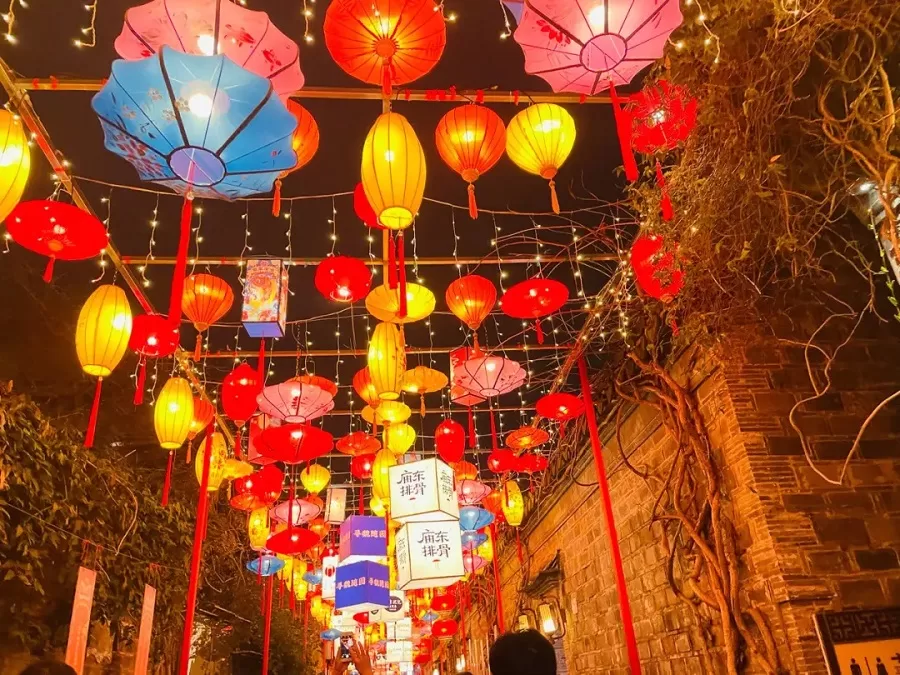
The Nanjing Confucius Temple Lantern Festival, also known as “Jinling Lantern Festival,” is a distinctive folk cultural event that takes place annually from Chinese New Year to the Lantern Festival, with the latter being particularly spectacular. During the Lantern Festival, thousands of lanterns illuminate the temple, creating a mesmerizing sea of lights that attracts throngs of visitors. The tradition of lantern festivals in Nanjing dates back to the Southern Dynasties,, earning the reputation of “Qinhuai Lanterns as the Best Under Heaven.” In the 20th century, the lantern festival expanded, enhancing the artistry of Qinhuai lanterns and catalyzing the development of various folk arts such as paper cutting, spinning tops, knotting, carving, shadow puppetry, lion dance, yangge (a traditional folk dance), and stilt walking. The Nanjing Confucius Temple Lantern Festival not only illuminates the night but also illuminates the vibrant tapestry of folk arts and crafts in the region.
Vlog about Nanjing Confucius TEmple
Recommended One-day Itinearary
Old East Gate (老门东): Start your day at Old East Gate, a historic area known for its preserved architecture and vibrant atmosphere. Explore the traditional shops and alleys.
Zhan Garden (瞻园): Head to Zhan Garden, a classical Chinese garden with beautiful landscapes and historical significance. Take your time to stroll through the serene surroundings.
Wuyi Lane (乌衣巷): Visit Wuyi Lane, a charming ancient alley with well-preserved architecture. Enjoy the unique atmosphere and explore the narrow lanes lined with shops and teahouses.
Bailuzhou Park (白鹭洲公园): Proceed to Bailuzhou Park, known for its scenic views and relaxing ambiance. Take a leisurely walk in the park and enjoy the natural surroundings.
Jiangnan Gongyuan (江南贡院) – China Imperial Examination Museum: Explore Jiangnan Gongyuan, also known as China Imperial Examination Museum. Discover the history of the imperial examination system in ancient China.
Return to Wuyi Lane: Return to Wuyi Lane to explore any areas you might have missed earlier or indulge in local snacks and tea.
Confucius Temple (夫子庙): Visit Confucius Temple, a cultural and historical complex. Learn about Confucianism and its impact on Chinese culture.
Wende Bridge (文德桥): As evening approaches, head to Wende Bridge to start your night tour along the Qinhuai River. Enjoy the lights and ambiance of the river at night.
Useful Tips Summarized from Reviews
Free Admission to Main Area: Entry to the Confucius Temple area is free of charge. However, some smaller attractions within, like the Imperial Examination Museum and the Dacheng Hall, may require a separate ticket.
Ideal Time to Start Exploring: It is recommended to start exploring around 4:00 PM, especially if you wish to enjoy the night view of the Qinhuai River. The area around Wende Bridge, especially near the Qinhuai River, offers excellent views. Another prime spot is by the Tianxia Wenshu Archway, directly facing the Grand Chiming Screen.
Evening River Cruise Recommendation: For those interested in a boat ride to appreciate the night scenery of the Qinhuai River, consider heading to Laomen Dong (Old East Gate) first. You can conclude your visit to Confucius Temple with a boat ride. Daytime boat tours are priced at 80 yuan per person, while the evening tour costs 100 yuan per person.
Attractions Near Nanjing Confucius Temple

Laomendong Historic District – A Testament to Nanjing’s Vibrant Past
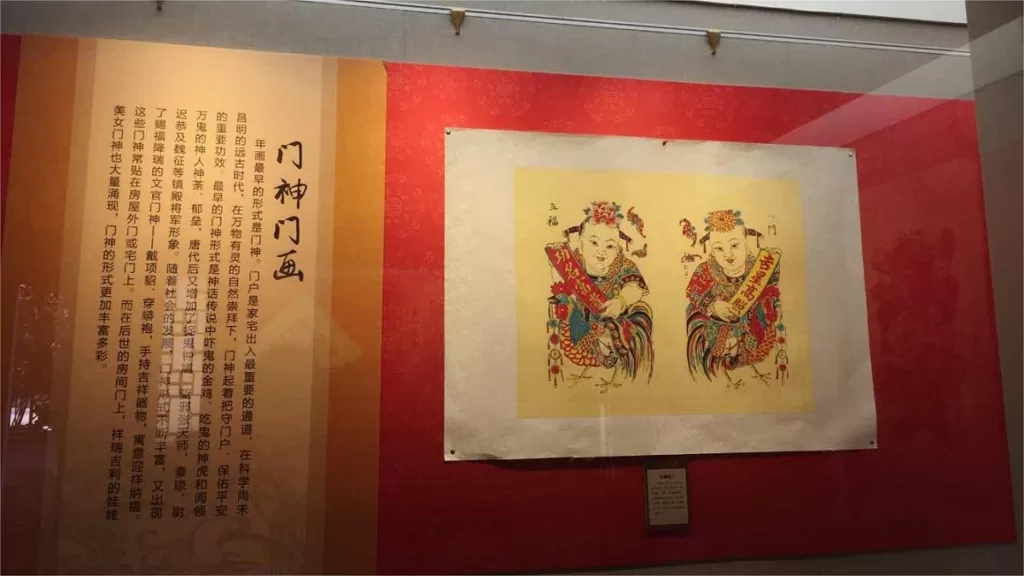
Nanjing Folk Museum – A Glimpse into the Daily Lives of Local People

Zhonghua Gate – A Majsetic Fortree Gate

Zhanyuan Garden – A 600-Year-Old Retreat
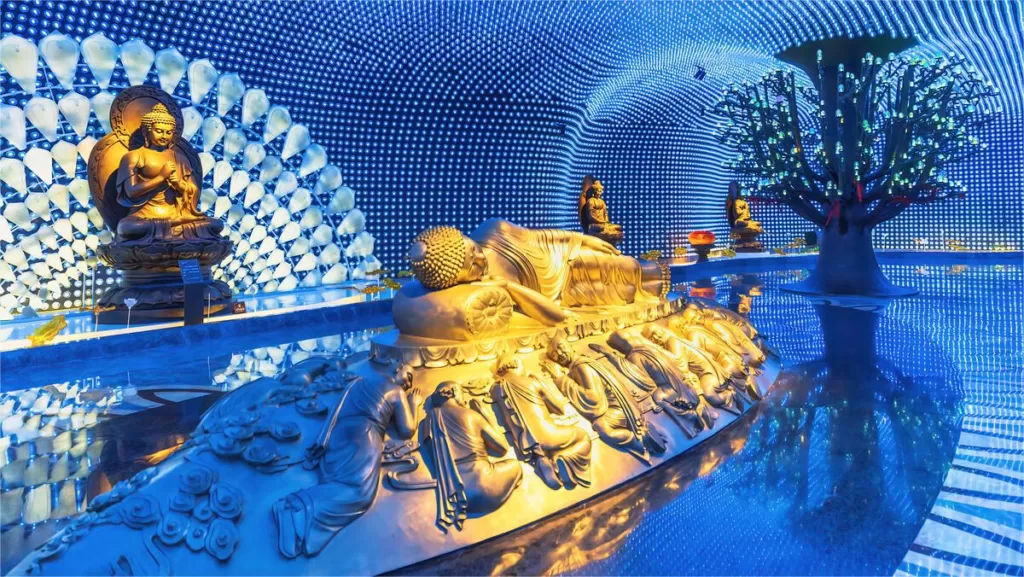
Bao’en Temple – Originally Built in hte 4th Century
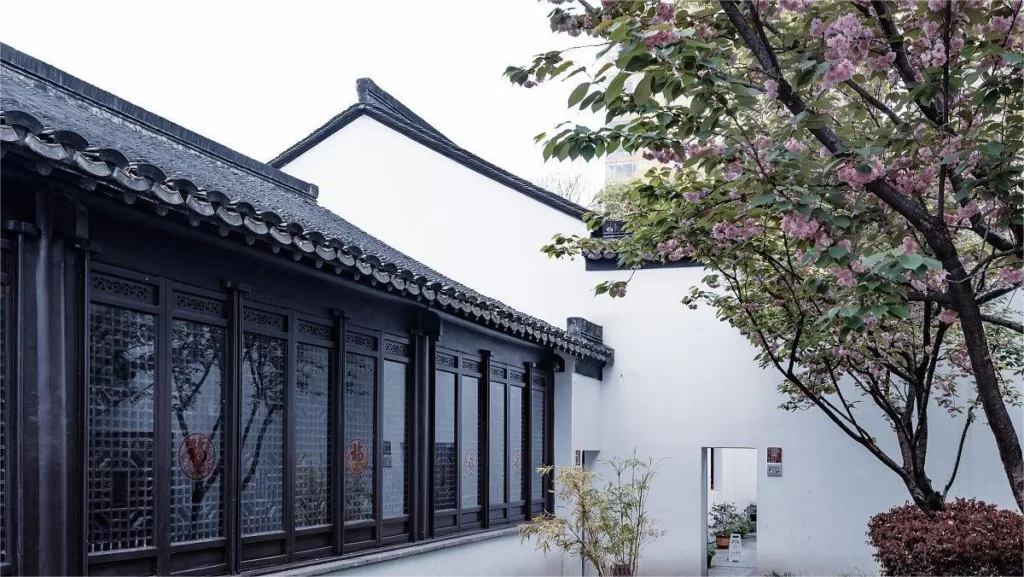
Former Residence of Gan Xi – A Place Steeped in a Bygone Era

Porcelain Tower of Nanjing – An Architectural Wonder
Jiangsu historical sites, Nanjing attractions